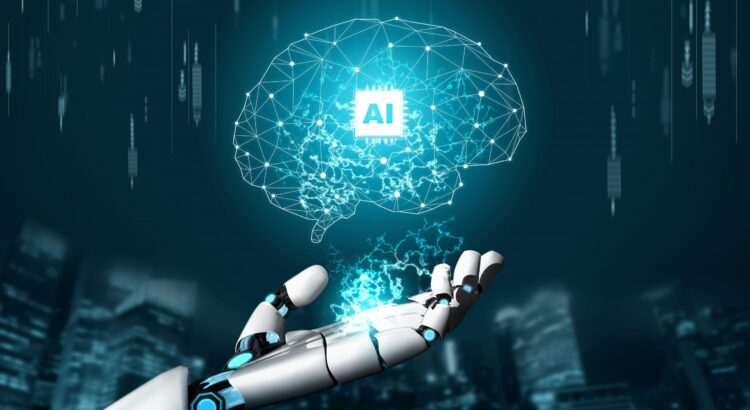In an age where user expectations are soaring and competition in the mobile app space is fierce, Artificial Intelligence (AI) has emerged as a transformative force. No longer a futuristic concept, AI is now a mainstream technology that powers some of the most successful mobile apps across industries. From personalizing experiences to optimizing performance and automating tasks, AI is drastically reshaping how users interact with mobile apps.
The Rise of AI in Mobile Applications
AI integration in mobile apps has gained momentum due to advancements in machine learning, natural language processing (NLP), computer vision, and real-time data analytics. These capabilities allow mobile apps to become smarter, more intuitive, and user-centric.
Leading companies such as Google, Apple, and Amazon have embedded AI in their core mobile offerings – think Siri, Google Assistant, and Alexa. But AI is not limited to tech giants anymore. Startups and SMEs are increasingly leveraging AI to create more engaging, personalized, and efficient app experiences.
Personalized User Experience at Scale
One of the most significant impacts AI has on mobile apps is the ability to personalize content and user journeys. AI algorithms analyze user behavior, preferences, and interactions in real-time to offer recommendations, push notifications, and features tailored to individual users.
For example:
- Streaming apps like Netflix and Spotify use AI to recommend shows or music based on your watching or listening habits.
- E-commerce apps such as Amazon or Flipkart utilize AI to suggest products you’re likely to buy.
- Food delivery apps recommend dishes and restaurants based on past orders and search history.
By predicting user intent and behavior, AI makes the app experience seamless, relevant, and engaging.
Conversational Interfaces with Chatbots and Voice Assistants
AI-powered chatbots and voice assistants are revolutionizing how users interact with apps. These intelligent interfaces provide 24/7 support, answer queries, and even facilitate transactions – all in real time.
Apps like Swiggy, Zomato, and banking applications now feature AI chatbots that guide users, handle complaints, and recommend services. With the integration of NLP, these bots understand context, sentiment, and intent, making the interaction feel more natural and human-like.
Voice technology is also gaining ground. With integrations like Google Voice or Apple Siri, users can navigate, search, and operate mobile apps hands-free, improving accessibility and convenience.
Predictive Analytics for Proactive Engagement
Predictive analytics uses AI to forecast future user behavior based on historical data. Mobile apps harness this to send proactive recommendations, reminders, and alerts that enhance the user experience.
For instance:
- A fitness app can suggest workout plans based on your past performance.
- A travel app can notify you of flight deals aligned with your previous searches.
- A finance app can alert you about upcoming bills or potential savings.
This proactive engagement keeps users returning to the app and increases retention rates.
Enhanced App Security and Fraud Detection
Security is a growing concern in the digital space, especially for apps handling sensitive data. AI helps identify and mitigate threats through behavior analysis, biometric authentication, and fraud detection algorithms.
AI can detect unusual login patterns or payment behaviors and flag or block potentially fraudulent activities in real-time. Face recognition and fingerprint scanning, powered by AI, add layers of security to banking, healthcare, and finance apps.
By safeguarding user data and transactions, AI builds trust and improves the overall app experience.
Smarter Search and Navigation
AI improves the search functionality in mobile apps, making it faster, more accurate, and context-aware. Visual search and voice search are AI-powered enhancements that are quickly becoming standard.
For example:
- E-commerce apps allow users to upload images and search for similar products.
- Travel apps offer auto-suggestions and real-time results based on user preferences.
- Learning apps like Duolingo adapt the content based on your pace and progress, making navigation more meaningful.
Such enhancements save time and ensure users find what they’re looking for quickly.
Real-Time Translations and Accessibility
With globalization, apps must cater to a diverse audience. AI makes real-time language translation possible, helping apps serve users across regions and languages.
AI also boosts accessibility by offering features like voice commands, speech-to-text, and adaptive user interfaces for individuals with disabilities. These features ensure inclusivity, a crucial component of user experience today.
The Future is AI-First
AI is not just an enhancement – it’s a foundational technology shaping the future of mobile app development. As models become more advanced and data more abundant, the possibilities are limitless. Developers can now build apps that think, learn, and evolve with their users, resulting in deeper engagement, higher satisfaction, and improved business outcomes.
From dynamic personalization to predictive automation, AI is no longer optional – it’s essential for delivering the next generation of mobile experiences.
Conclusion – Powered by Innovation at Razorse Software
At Razorse Software, we believe in staying ahead of the curve by embracing cutting-edge technologies like AI. Our mobile app solutions are designed with intelligence at their core – driven by user behavior, enriched with personalization, and built for future scalability. Whether you’re a startup or an enterprise, our AI-powered apps aim to elevate your brand and deliver memorable digital experiences.
#ArtificialIntelligence #MobileApps #AIUX #AppDevelopment #RazorseSoftware #TechInnovation #MachineLearning #Chatbots #MobileExperience #UserCentricDesign #FutureOfApps





